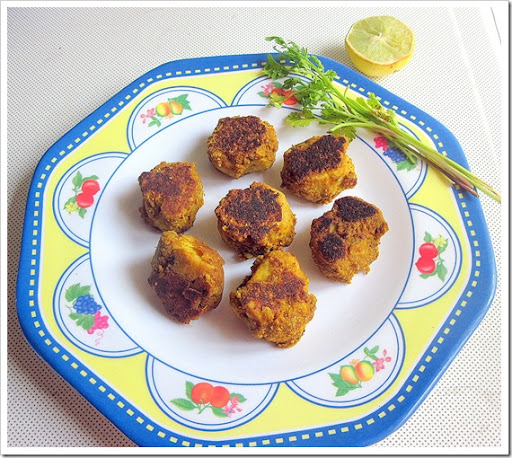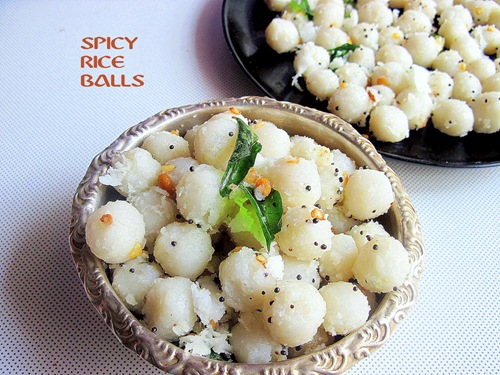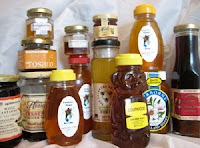
You don't need a recipe to make cabbage patch chocolates - just a technique guide to show you the way. To begin you'll need quite a bit of equipment and ingredients. There are two sites that I like for supplies - each one has its shortfalls. The one with the biggest selection is
http://www.sugarcraft.com/. The drawbacks with using sugarcraft are that they are very impersonal - there is no phone number if you have a problem, and if you don't have your order number, you are completely out of luck - they cannot tell you anything about your order without it. In addition, they are very slow - no inquiries until at least 10 days, and that's when they ship. From this site, you also cannot order a small quantity of candy eyes, unless you take whatever color they give you (and some of the colors are very funky and not suitable for baby dolls). They do, however, have a huge selection with photos which makes it easy to see what to buy. The site that I actually bought the supplies from is:
http://www.chocomolds.com/. They are very personal and friendly, shipped quickly and had a package of 48 eyes. It is hard to use their site, however, because they don't have any pictures, so you need to know what you want.
Here is what you need:
Baby Face Lolly Chocolate Mold (3 per mold)
Mercken's Peach Wafers (this is very delicious tasting coating- Do not buy Wilton wafers which are yucchy). If you are filling the molds completely with this, you need 2 ounces per face (you won't use that much but you lose some to hardening on utensils and bowls).
Dark Chocolate, if filling the centers with it - about 1-1/2 ounce per face. I used chocolate chips because they were cheaper (Ghirardelli). If I were making fewer and spending only my money, I would have used bar chocolate. Bar chocolate tastes better (to me) and is easier to work with because it melts into a thinner state than chocolate chips.
Instant-read thermometer - if you plan on tempering the chocolate
Mercken's Cocoa Dark Wafers (ok tasting - I use it for decorating only) - 1 bag if you want to paint on dark hair. You can also paint the hair with real chocolate, but if you don't temper it, it might turn whitish or rainbow-colored. If you want light brown hair, add brown food color to the peach wafers. If you want blond, you will need to buy 1 bag of Mercken's Yellow or White Wafers(not super white) and add food coloring to these. You might also need Paramount Crystals to get the yellow coating to melt ( I didn't need it for the peach wafers).
Candy Eyes - each small package has 48 eyes. Don't forget that you need 2 per face! You can make your own eyes, but you will need fondant and food coloring to do that.
4-1/2-inch sucker sticks
Petal Dust or something like that in a pink color to brush on the cheeks - I think I bought mine at Michael's, but any place that sells gumpaste supplies will have some.
Assorted brushes - you'll need some good quality brushes so that the hairs don't come off in the chocolate,
and one cheap, bushy brush for putting on blush. The pointy one I use for attaching the eyes and the one on the right I use for brushing blush. The pointy one was part of a set of more expensive brushes
by Loew-Cornell. There are two nice pointy brushes in the set. #1 and #4 370 round and 370 liner. You'll have to do an Internet search as I don't know where I bought them.

This is also from the Loew-Cornell set. 370 Shader #8. It's useful if you need to brush on chocolate to spots that you missed. Also good for fixing errors (more on this later).
Heating Pad for keeping the chocolate and chocolate wafers melted and at the right temperature.
Small cake decorating spatula - I like the one that is angled (I got mine at Michael's - it's manufactured by the The Ace of Cakes guy, Duff). It looks larger in the photo, but the blade before it bends is actually only 3-1/2 inches long.
Tweezers that you use only for food prep. I bought a special pair from a gumpaste supplier, but you could use regular tweezers as long as they stay in the kitchen!
Full-size muffin papers in various colors - one for each head
Tissue paper for the clothing - about a 5 or 6-inch square for each head
Ribbon - at least 6-inches for each, or more if you want to tie bows
Waxed paper
INSTRUCTIONS
Wrap the heating pad with a dishtowel, and turn it on to low.
Place no more than 1 pound of the Merckens peach wafers in a microwave-safe bowl ( use a bowl that doesn't retain heat, such as a pyrex dish or a plastic container). Heat on medium power (5) for 1 minute. Stir, and continue to heat and stir in 30 second increments on power 5, until the wafers are melted (don't let the coating get hotter than 120 degrees F.). Set the bowl on the heating pad.
If you're going to fill the entire mold with the coating, do that now, filling each mold right up to the top. Set the molds in the refrigerator to chill until the coating is completely set- anywhere between 5 -15 minutes.
If you plan to fill the centers with chocolate, you'll need to coat each mold with the peach coating. There are two methods for coating the mold with chocolate. I prefer to spoon in about 1-1/2 teaspoons of the peach coating into each of the 3 holes and then to swirl the chocolate around inside of the molds until they are completely coated. You'll be doing all three at once. I like this method best because it spreads the coating evenly and is much faster than painting each cup.

When you use the swirl method, the coating might swirl slightly out of the mold cup. This is actually good. It ensures that the entire mold is coated. Simply wipe off the excess coating with a paper towel or rag. If you want an extra thin shell, you can hold the mold upside down over a piece of waxed paper and let the excess coating drip out of the mold.
If you have trouble with this method, you can paint each cup individually. Start by putting in the 1-1/2 teaspoons of coating and then use the 370 Shader #8 brush to paint from this pool of coating. After you get the whole thing coated, you might have to go back and daub on more chocolate on the spots you missed - you can see a few in the photo below.
In the below photo you can see that I have missed some spots at the top, too. These will be especially problematic if you don't notice them, as the dark chocolate and coating might not adhere well and you might get some separation when you try to unmold the chocolates (more on this later).
Make sure that the space where the stick goes is clear of chocolate, as the sticks won't be properly set into the chocolate if there is hardened coating in the stick space.
Place the molds in the refrigerator for no more than 3 minutes to set the shells. Now you have to decide if you want to temper your chocolate or not. Untempered chocolate will take much longer to set, will never be as firm as tempered chocolate, and can turn white or streaky when dry. Since the chocolate will be encased in the coating, the white or streaky color won't show but you'll have to wait a lot longer for each one to set.
If you do want to temper the chocolate, place about 9 ounces (chips or finely chopped bar chocolate) in a microwave-safe bowl. Finely chop another 3 ounces of chocolate or set aside another 3 ounces of chips. Microwave the chocolate on power 5 for 1 minute. Stir and then reheat the chocolate in 30 second increments on power 3, stirring between each. Use an instant-read thermometer to make sure that the temperature is in the 90-110-degrees F. range. When all of the chocolate is melted, add the remaining 3 ounces of chocolate and stir and rest until all of the chocolate is melted and the temperature comes down to 84 degrees, but not lower. Place the bowl back in the microwave and heat for 10 seconds on power 2 to bring the temperature to between 88-90-degrees F. If the temperature goes about 91 degrees, you have to let it cool back down to 84-degrees, and try again ( you can add more chopped chocolate to get the temperature down a little faster). If the temperature drops below 84 degrees, you repeat the entire process. Once you have successfully tempered the chocolate, place the bowl on the heating pad to keep it at the right temperature. Stir and check the temperature often.
Spoon about 1 to 1-1/2 teaspoons of chocolate into each cup ( I use 3 molds at a time to make 9 babies, and then repeat the whole process, but you can do whatever will fit your refrigerator and counter space), so that the chocolate comes to within 1/16 inch of the top. Set the lolly sticks in the stick holes. You might need to press down on them to make sure that they are all the way into the space provided for them.
Place the molds in the refrigerator to set the chocolate. This will take about 5 minutes if the chocolate has been tempered and 15-25 minutes if the chocolate was not tempered.
Cover the top of the chocolate with 1 final layer of coating. I find it's easiest to just spread it with a teaspoon. Make sure that the molds are completely filled up, and then set them back into the refrigerator for about 3 minutes to set the coating.
Let the molds stand at room temperature for a minute before you try to unmold them. If the coating and chocolate are too cold, the coating will crack when you try and flex the mold to get the chocolate out. Place a piece of waxed paper on the counter or in a pan onto which you'll unmold the chocolate. To get them out of the molds, press on the noses of the babies. If the chocolate don't pop out, let them rest a little more and then try again. They should pop out of the molds pretty easily.
If you haven't done a good job in sealing in the chocolate, or if they were too cold when you tried to pop them out, part of the shell might stick to the pan and separate from the chocolate. Don't despair - it can be fixed!
Just use the decorating spatula (metal) or brush to add a glob of coating to the chocolate.
Then heat the spatula in the flame of a gas stove or over the coil of an electric, just for a few seconds to get the spatula warm. Press the spatula on the glob of chocolate and smooth it out. You can use your finger to do the final smoothing.
Another problem you can have when the chocolates pop out, is that there is excess chocolate around the edge of each form because you put just a bit too much coating into the mold.

This also gets fixed with a warm spatula - if you look at the photo of the spatula, above, you'll see that's exactly what I'm doing. Just run the warm spatula around the edge of the form and the little excess tails of coating will melt away. Again, your finger is the perfect finishing smoother.
You're now ready to do the hair. You can use that nice tempered chocolate you have warmed on the heating pad, or you can melt some of the cocoa wafers for dark hair, or use one of the other combinations mentioned above, for other colors of hair. Use the fine pointed brush, above, to brush chocolate onto the curl that is molded into each chocolate. You can then use your imagination to do other hair styles. For fine, wispy hair, use an almost dry brush. If you want some spiky hair sticking out, you will need to let some of the chocolate or dark wafers to start to cool and thicken, otherwise it will be too thin to stand up.
For the eyes, use a fine pointed brush to dot a small glob of melted peach coating in the socket of each eye. Use tweezers to set the eyes into the sockets, and then press lightly so that the eye will adhere to the melted chocolate.
If you want to make your own eyes, I think it is much easier to use fondant than to pipe royal icing eyes. Roll fondant into small round balls - they should be smaller than the sockets. Into the center
of each ball, press in a small colored ball. For the iris, use black food coloring. Eyes will look more natural if the iris is slightly cut off at the bottom of the eye (not as shown here), so that it gives the suggestion of a lower eye lid.
The last thing to do is to give the cheeks a little blush. Use the petal or luster dust in a pretty pink color. Don't put too much on the brush at once. The dust has a little bit of a glittery effect, but if you put it on sparingly, and brush off any excess, it really gives the babies depth and personality!
For the bonnets, use scizzors to make a slit in the side edge of the muffin papers, and then set the heads into
the bonnets. You can do the bonnets or the sleep sacks first.
To make the sleep sacks, set the tissue paper square either under the lower third of the head or at the neck.
Fold in the two sides.
and then tie the ribbon around the top.
You can also make a wider bottom, so that they look more like sleep sacks.
Voila! You have now made some of the cutest looking chocolate lollypops in the world!


































